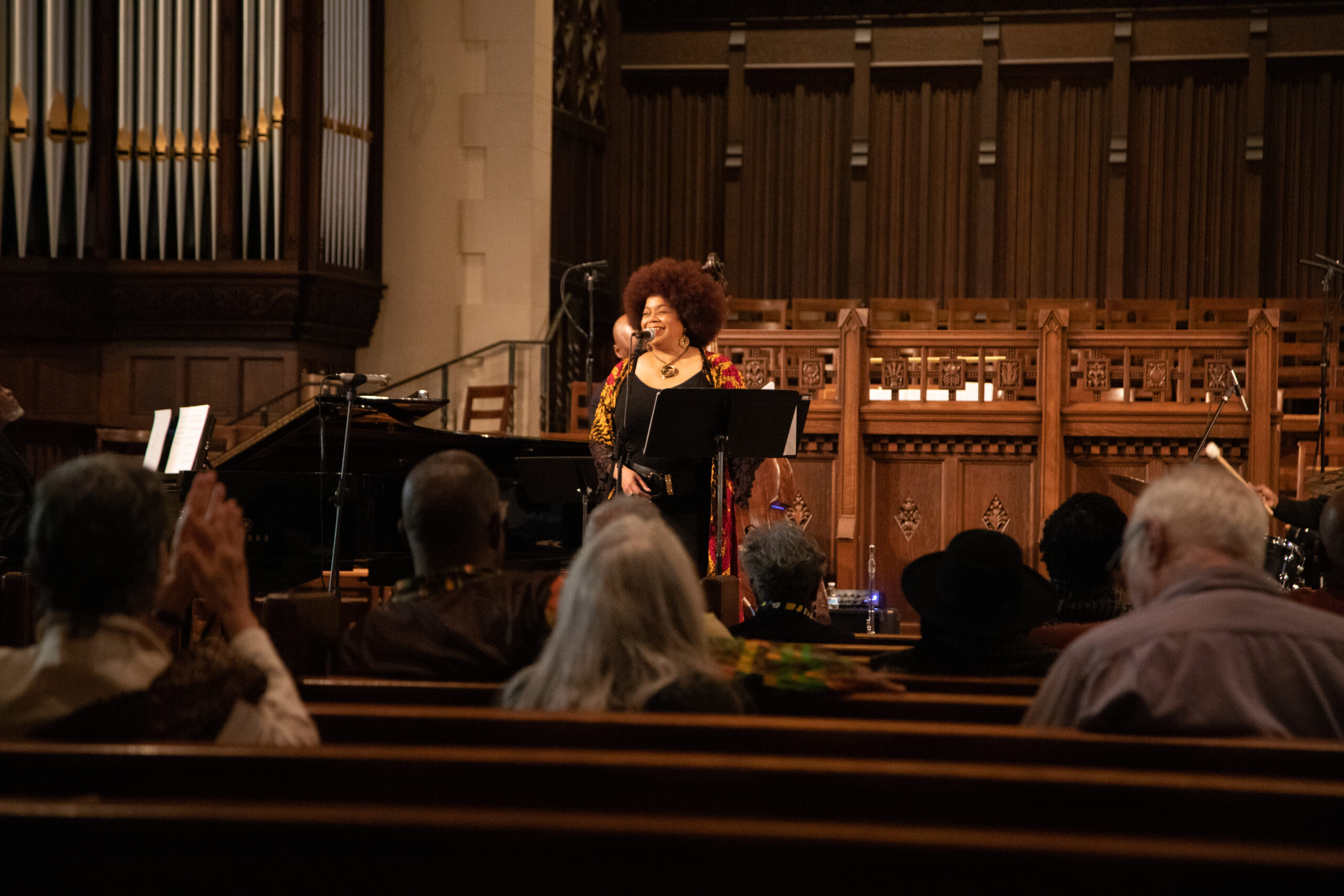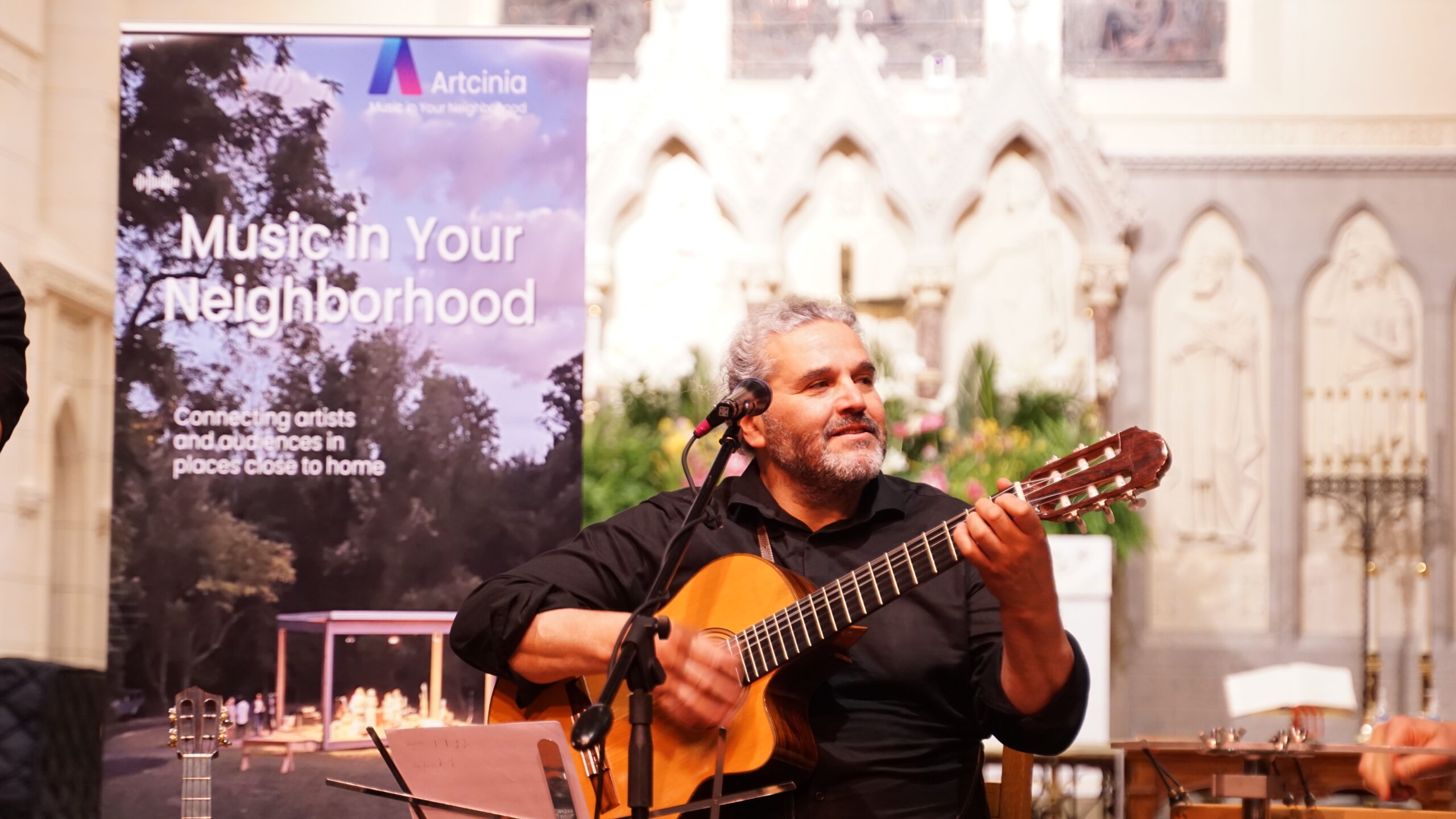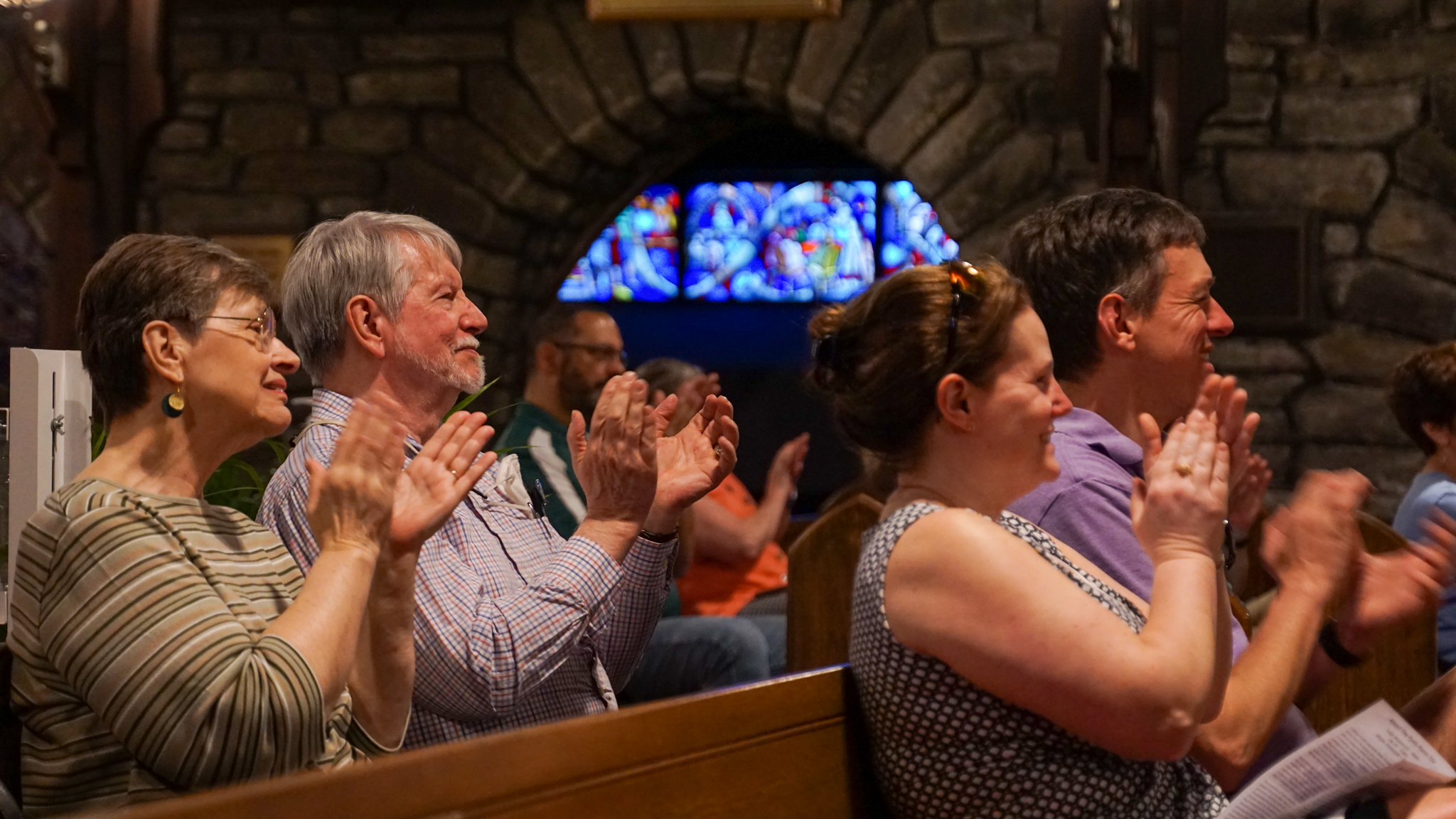by Ann Kendall
In 2021 silence and loneliness had taken hold of neighborhoods and homes across Philadelphia and the world. With much of our normal activity and interaction suspended due to the global COVID-19 pandemic, the “grace notes” of life that hold relationships together were just out of reach. From this time of loss, Artcinia was born.
Collaborative Composition
“If I were to make a word cloud for Artcinia, collaboration would be the largest word, right in the center,” says Anne Schoemaker, the organization’s cofounder. In the early pandemic days, the absence of performing arts was felt intensely across Philadelphia by musicians and concertgoers. But even before the pandemic, high-quality music experiences had never felt accessible to major swaths of the Philadelphia region’s populace. As a classically trained pianist, Schoemaker understood the ability of performing arts to build communities by bringing musicians and attendees together. This led Schoemaker into conversations with a chamber music colleague, Luigi Mazzocchi (Artcinia cofounder and co–artistic director), about how they might bring musicians and neighborhoods together for concerts that would provide joy and respite while keeping everyone safe. Serendipity and mutual colleagues led Schoemaker and Mazzocchi to Bob Jaeger and Partners for Sacred Places.
“Anne and Luigi identified the need to bring folks together in their own neighborhoods for art and shared experiences,” said Jaeger, president of Partners for Sacred Places. “Sacred places were the perfect venue for that, and we were happy to facilitate those congregational partnerships.”
In the first four months of the resulting collaboration, Artcinia, with Partners’ support, brought 35 outdoor concerts to life in Philadelphia neighborhoods. Schoemaker’s first concern in planning these performances was pinpointing under-resourced neighborhoods of Philadelphia, which are often overlooked when it comes to arts experiences. “One of our primary goals is providing opportunities for diverse communities to convene, and in doing so, we reach increasingly diverse audiences,” she says.
At first, concerts often featured Mazzocchi alone playing violin for audiences under a tent—lilting notes drifting into neighborhoods. Today, three years later, the organization has produced 140 performances in 18 neighborhoods, providing affordable, accessible opportunities to engage with live music while compensating over 150 musicians. How did they do this? By focusing on two pillars of their mission: matching music with neighborhoods and attracting multiple communities to performances.
Conducting the Moments
One staff addition proved essential to Artcinia’s engagement with a broad range of communities across an equally broad geography. Marquise Lindsey-Bradley, then completing his studies at the Cleveland Institute of Music, met Anne Schoemaker through a connection in the Philadelphia music world. On graduation he joined Artcinia as marketing director and brought a unique perspective: he had grown up in Philadelphia, knew people from all over the city, and was searching for a way to apply his background and his studies (clarinet and business) to his next endeavor. Lindsey-Bradley also brought the vibrancy of youth to Artcinia and understood how to engage audiences throughout the city. He quickly ascertained that to match music with communities and marketing strategies with neighborhoods, genuine relationships and an on-the-ground approach would be essential.
All too often, performing arts are not part of the neighborhood fabric where Artcinia aims to have a presence, and traditional marketing techniques are not always effective. Lindsey-Bradley knew that Artcinia’s marketing must break down assumptions and barriers to reach audiences used to being ignored by the classical music community. “Access to technology in under-resourced neighborhoods is challenging,” he says. “Word of mouth is most effective at reaching people. We want our attendance numbers to be high, but we also want our audience to be reflective of the neighborhood.” People may see fliers about a performance but, because the cost is low, assume that the performance quality will be poor. Alternatively, others may not feel welcome in a sacred place where they are not a member. By working with local communities and listening to them, Lindsey-Bradley hoped to change these beliefs, one performance at a time.
Artcinia is netting the results of Lindsey-Bradley’s efforts. In just a short time, concert audiences are more reflective of the neighborhoods directly surrounding performance sites, and audience members are less likely to have a preexisting relationship with the performance sites. This opening of doors is what every conductor hopes for when they approach the podium—that the audience will feel reflected in the music they hear and that each audience member will walk away with a sense of belonging.
Lyricism of Connection
Jake Kelberman studied music and political science at Temple University, and both proved essential in his eventual role as Artcinia’s co–artistic director. Kelberman met Schoemaker just after the first round of COVID-19 vaccinations became available in 2021. Schoemaker immediately saw the potential to broaden Artcinia’s programming, which until that point had been focused on classical performances. Kelberman’s musical focus centered on jazz and blues, and he was acquainted with musicians from across Philadelphia, recruiting them to take part in Artcinia performances.
Kelberman knew that embracing jazz and blues music would enable audience growth into neighborhoods and communities that Artcinia had not previously touched. “I want to build that infrastructure to make the arts part of day-to-day lives,” says Kelberman. He knows that music binds historic spaces with the people who experience them.
Finding Harmony
The affordability of an Artcinia performance makes a difference for arts lovers on limited budgets. Take Northeast Philadelphia resident Ingrid Needleman. She has attended three Artcinia performances at the Church of St. William, near her lifelong home. Needleman is retired now and nearing 80. She enjoys theater and music and loves being able to see a performance close to home.
Needleman takes the bus to the church since she no longer drives, and she appreciates afternoon concerts because she prefers not to be out after dark. Needleman has friends in the neighborhood that she can invite to go along as well. While she is not a member of St. William’s parish, she feels welcomed and accommodated there.
Needleman first noticed a posting for an Artcinia performance in the Northeast Times. Today, she is an Artcinia devotee. You might find her handing out Artcinia postcards at a local bus stop or hanging posters. If someone looks like they might be interested in music, she is happy to recruit them to become an Artcinia follower. “A concert that is $15 for a family in a welcoming, safe space that’s kid-friendly, has an elevator, and parking with friendly people—it’s just not intimidating,” Needleman says.
Grace Notes
We often consider “grace notes” to be embellishment: those tiny notes that we can do without. But without them we miss so much. Artcinia brings music to neighborhoods across Philadelphia, where a little touch of “grace” allows us to keep up with the downbeats of the day.





